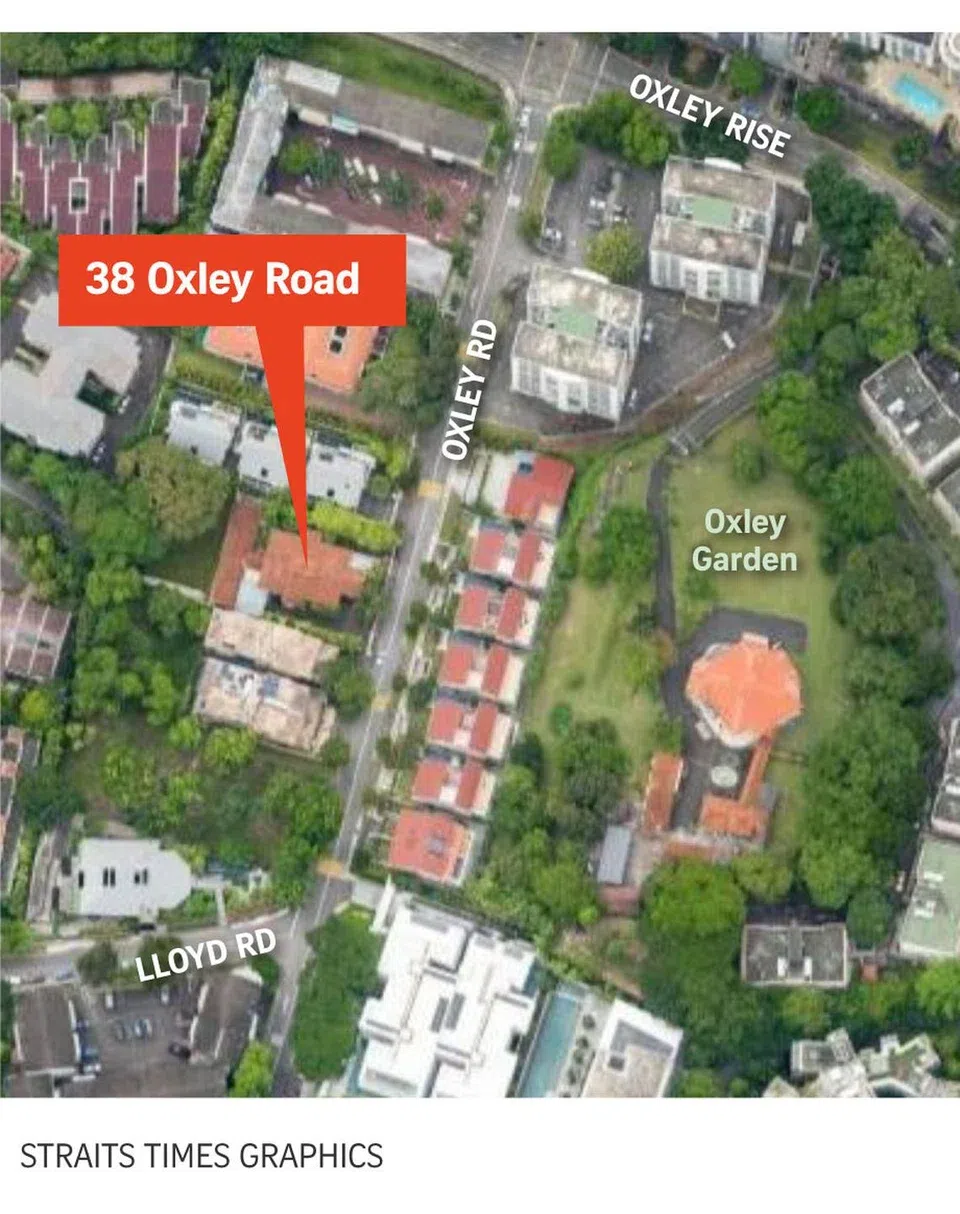SINGAPORE – The site of the family home of founding prime minister Lee Kuan Yew at 38 Oxley Road has been assessed to have strong national significance worthy of preservation as a national monument, an advisory board said.
The site bore witness to pivotal events in the 1950s that marked Singapore’s transition from a colony to an independent nation and was “more than just the home” of Mr Lee, said the National Heritage Board’s Preservation of Sites and Monuments (PSM) division advisory board on Nov 3.
“The modest buildings contrast with the impactful and consequential decisions taken there,” it said in its statement of assessment.
In October 2024, the National Heritage Board (NHB) said that the PSM advisory board would carry out a study of 38 Oxley Road to determine whether it has national historical, heritage and architectural significance as to be worthy of preservation.
On Nov 3, the advisory board said the site has great historic merit, noting that it served as the venue for political conversations, activities and decisions of Singapore’s founding leaders, which profoundly influenced the trajectory of the country’s independence movement and subsequent national history.
“This makes the site a foundational part of the story of Singapore’s independence, which is not represented by any other site or monument,” it said.
Preserving the site would allow present and future generations of Singaporeans to reflect on the gravity of these significant events, as well as the ideals and values that have come to shape Singapore, the advisory board added.
Mr Tan Kok Hiang, who chairs the PSM advisory board, said: “38 Oxley Road was where the foundations of Singapore’s independence were established. The board was unanimous about its national significance, and it fills a critical gap in educating current and future generations about this pivotal stage in our history.”
Mr Lee lived in the property from around 1950 until his death in 2015.
He initially rented the property, before purchasing it in 1965 with his wife Kwa Geok Choo.
The NHB earlier studied the property for a
such as retaining or demolishing it.
This study, published in April 2018, considered the site’s historical and architectural significance. It also considered the property’s authenticity by documenting the changes to the house, which was built in the late 1890s.
The study noted the house’s association with key national events.
“The individuals who gathered in the basement of No. 38 Oxley Road became key players in the politics of that era and altered the destiny of the country,” it said.
Specifically, it was in the basement dining room of the house that the founding members of the PAP began meeting in the 1950s to consider the feasibility of forming a political party.
The PAP made its debut at the 1955 Legislative Assembly election and the house served as the party’s election headquarters.
Preparations for that election were made by the PAP in the house’s verandah, where unionists and postal workers prepared posters.
The PAP has won every general election in Singapore since 1959 – when the party conducted its campaign largely out of Oxley Road.
Later, as prime minister, Mr Lee worked on national matters at a teak desk in the house’s study.
As for its rarity, 38 Oxley Road is one of the last remaining bungalow-style houses in the area, where such houses were once common.
A “twin” bungalow that was formerly located at 40 Oxley Road has since been demolished, with its plot subdivided into three lots – now 40, 42 and 44 Oxley Road.
Of the more than 200 bungalows that have been conserved in Singapore, said NHB in 2018, 16 are from the Early style, which 38 Oxley Road belongs to.
Bungalows in the Early style were built from the late 1800s to the early 1900s, and are generally one-storey tall.
As it was built on a slope, 38 Oxley Road has a single storey at the front and two storeys towards the rear.
The house has a high-pitched roof, which suggests lofty ceilings typical of bungalows, allowing hot air to rise and cool air to sink, resulting in cooler rooms.
The building is also elevated on arched masonry, which helps ventilate its basement space.
According to the 2018 ministerial committee report, 38 Oxley Road bears close resemblance to two conserved Early style bungalows – 733 Mountbatten Road and 9 Buckley Road.

